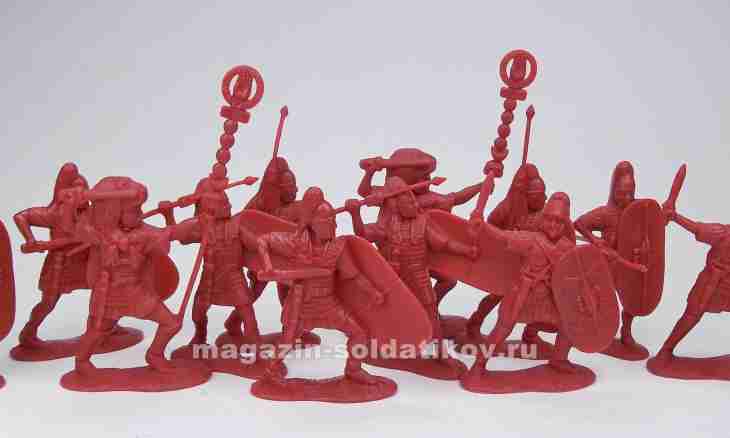To this day it is possible to see the Roman figures on dials of hours or on backs of ancient books. They are used also in the usual text – for example, for designation of sections. The computer user who is looking for the necessary badges on the keyboard even does not think that once Roman tsezar used the same symbols.
Who such Etruscans?
It is considered to be that the Roman figures are thought up in five hundred years B.C. Attempts to designate numbers by symbols were made earlier. It were stones, sticks and in general everything that could be near at hand. But for development of economy more or less universal symbols were necessary. Such system of record was also offered by Etruscans. This tribe lived in the territory of modern Tuscany which in the Roman times was called Etruria. Etruscans created the developed civilization, they actively built and traded, and it was one of the reasons why rather simple system of record of numbers arose in this territory.
"Wooden" hypothesis
The following hypothesis of origin of the Roman figures is most popular. Ancient carpenters, as, however, and modern, had to consider logs. They did it by means of notches. One log – one vertical notch, two – two, and so on. But too many marks in the same log are inexpedient to place – both the carpenter, and the client will be forced to consider marks very long. Therefore simpler badges for figures "5" and "10" were thought up. The first looked as two notches connected in one point, the second – as a slanting cross. I, V and X symbols are considered as the most ancient. Other numbers of the first ten turned out by means of different combinations with these badges. At the same time only arithmetic action of addition was first applied. For example, number 4 was designated not by IV as now, and IIII, and number 9 – as VIIII. The modern system of record of the Roman figures appeared shortly before our era. Then there were also other signs – for designation of numbers 50, 100, 500, 1000. Their began to write down the L, C, D and M badges.
"Trade" hypothesis
Authors of the second hypothesis attribute honor of an invention of the Roman figures not to carpenters, but dealers. The fact is that it is very easy to represent all symbols of this system of record of numbers on fingers. Squeeze fingers in a fist and disperse index. Here to you and figure 1. Index and average – 2, index, average and anonymous – 3. Two hands it is possible to show IV (1 finger on the right hand and "birdie" on another), etc., up to hundred, five hundred and thousands.
How to consider?
Ancient Romans had to know structure of number very well. It was necessary to represent numbers for which there are no separate badges. The result was achieved by means of addition and subtraction. About what action to apply, told the provision of badges. If the sign designating smaller number stood at the left, it should be subtracted from bigger if on the right – to add. For example, means XL 40, and LX – 60. If to write down these examples by means of the Arab figures, then they will look as 50-10=40;50+10=60. The system of record nekruglkh numbers was quite complex, but the principle was applied the same. Correctly to read long number, it is necessary to divide it into categories at first mentally. For example, to read number MMXIV, it is necessary to remember what category is designated Latin by M. It corresponds to one thousand. There are no thousands in this example two, but the signs designating five hundred, one hundred or fifty. There is a badge corresponding to ten and signs for unit and the five. Carry out simple arithmetic calculations – and you receive number 2014.

